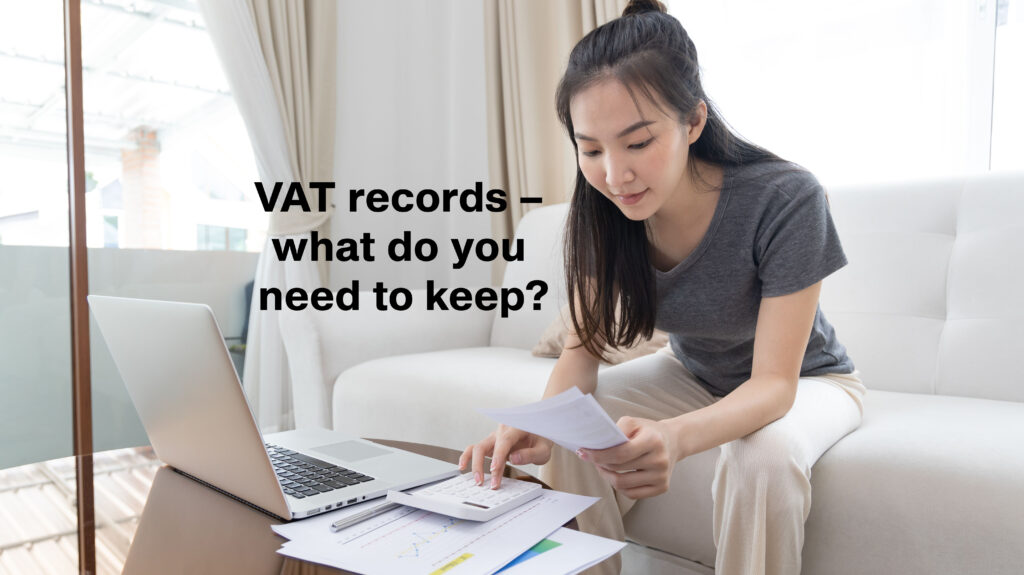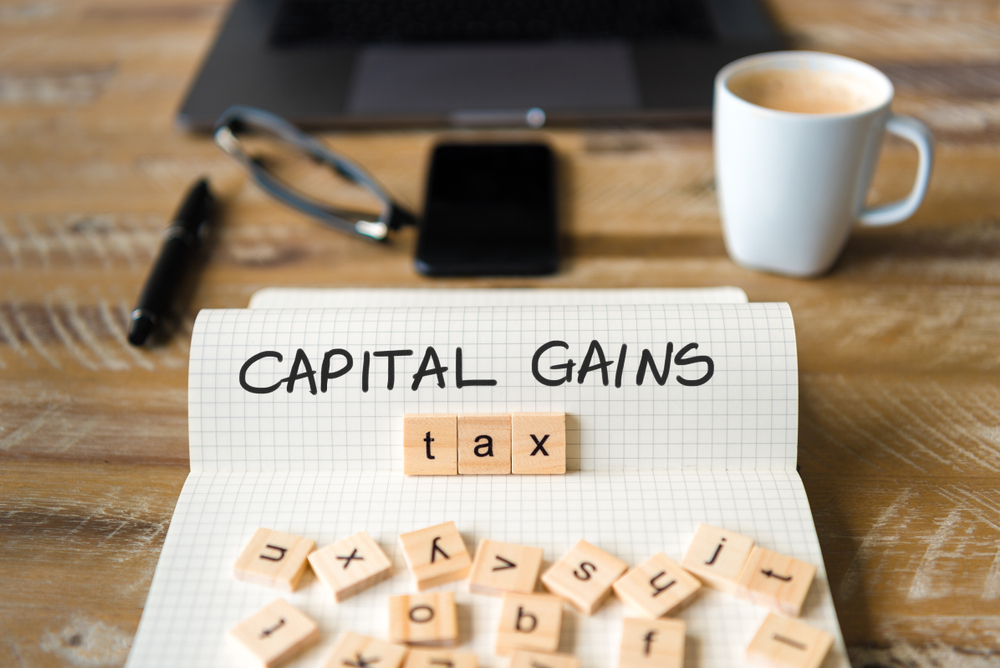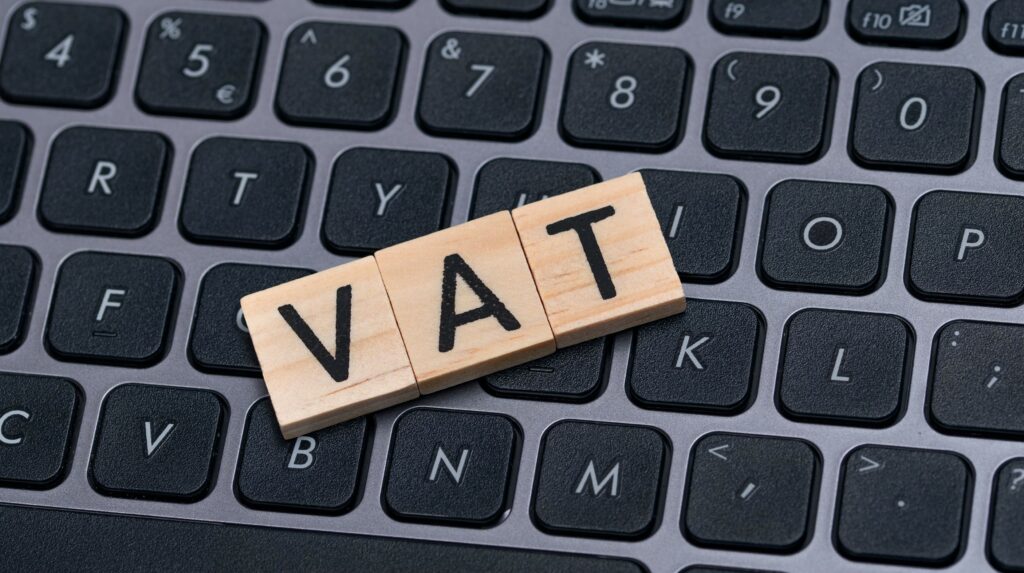
VAT records – what do you need to keep?
|
|
If your business is registered for VAT, you need to keep decent business records. These records must be complete, up-to-date and sufficient to enable you to calculate the VAT due to or from HMRC.
You’ll also need to maintain a VAT account and keep copies of your VAT invoices.
Let’s look at the range of business records you may need to keep, then talk about what keeping a VAT account means…
Business records
HMRC’s list of business records includes:
- Annual accounts, including a profit and loss account
- Bank statements and paying-in slips
- Cash books and other account books
- Purchase invoices
- Copy sales invoices
- Credit or debit notes issued or received
- Orders and delivery notes
- Purchase and sales books
- Records of daily takings, such as till rolls
- Import and export documents
- Relevant business correspondence, plus
- Any documents or certificates supporting special VAT treatment.
👉 The precise records you need to keep will depend on the type of your business. However, all businesses need to maintain a VAT account and keep copies of invoices.
👉 If your business is registered in Northern Ireland, you must also keep any documentation relating to dispatches and acquisitions of goods to or from the rest of the UK or any EU member states.
Your VAT account
👉 If you use Xero, QuickBooks or FreeAgent, you’re already covered🙂!
Your VAT account forms the link between your business records and your VAT return. All VAT-registered businesses must keep a VAT account.
To comply with Making Tax Digital (MTD), the account must be kept digitally (the clue’s in the name😉), either in a software package or on a spreadsheet.
To show the link between the output tax in your records and the output tax shown on your VAT return, you must keep a record of:
- The output tax owed on sales
- If your business is registered in Northern Ireland, the output tax owed on acquisitions from EU member states
- Any tax required to be paid on behalf of a supplier under a reverse charge procedure
- Tax that must be paid following a correction or adjustment for an error, plus
- Any other adjustments required by the VAT rules.
You must also keep a record of the following to show the link between the input tax in your records and the input tax shown on your VAT return:
- The input tax claimed on business purchases
- If your business is registered in Northern Ireland, the input tax allowable on acquisitions from EU member states
- Any tax that can be recovered following a correction or an adjustment for an error, plus
- Any other necessary adjustments.
The need to keep digital records
👉 Here again, if you use Xero, QuickBooks or FreeAgent, you’re covered😊!
To comply with the requirements of MTD for VAT, VAT-registered businesses must maintain certain records digitally and keep their accounts within ‘functional compatible software’. This means a software program or set of software programs, a product or set of products, or an application or set of applications, which can:
- Record and preserve digital records
- Provide HMRC with information and returns from data held in those digital records via an API (Application Programming Interface) platform, and
- Receive information from HMRC using the API platform.
Where data is transferred between software packages, applications or products (for example, from a spreadsheet to the VAT return software), this must be via a digital link.
VAT invoices
VAT invoices issued are an important part of your business records, while VAT invoices received are the primary evidence for recovering VAT. Copies must be kept of all VAT invoices issued and received.
Maintaining records over time
The general rule is that business records for VAT purposes should be kept for at least six years.
Getting ready for registration?
Check out these resources:
👉 The blog post ‘New VAT thresholds – when can you register and deregister?’
👉 ‘VAT: An Introduction’, an online course covering:
- How to register
- What information you need to give HMRC
- What you must do once you’re registered
- How to file your VAT return in FreeAgent, Xero or QuickBooks
This course is free to Financial Resilience Hub members😊. If you’re not already a member, you can:
- Buy the course for £49.99 (price correct at time of publication), or
- Join The Hub for Q&A sessions, weekly finance and general business tips, in-person and online workshops and access to a growing resource of bite-sized online courses available 24/7. Uncover the full membership benefits.
📢❕The information in this blog post was correct at the time of writing. Please check with your accountant for the latest information or, if you don’t have an accountant, join the Financial Resilience Hub to get access to one ours! Alternatively, keep an eye on HMRC’s website for updates.
ABOUT THE AUTHOR

Helen Monaghan is a Chartered Management Accountant, accredited NLP Practitioner & Finance Coach. Both a psychology graduate and an accountancy graduate, she has authored three business books, which beautifully bring together psychology, finance, and tax to empower the reader about money. Helen is the CEO of HM Finance Coaching & Advisory Ltd, a company that provides financial education and business mindset coaching to small businesses across the UK, in addition to accountancy services for limited companies in Scotland and across the UK. Helen is also the founder of The Financial Resilience Hub – find out how we can support you, and your business, to be financially resilient through our monthly membership.
© Helen Monaghan






Responses